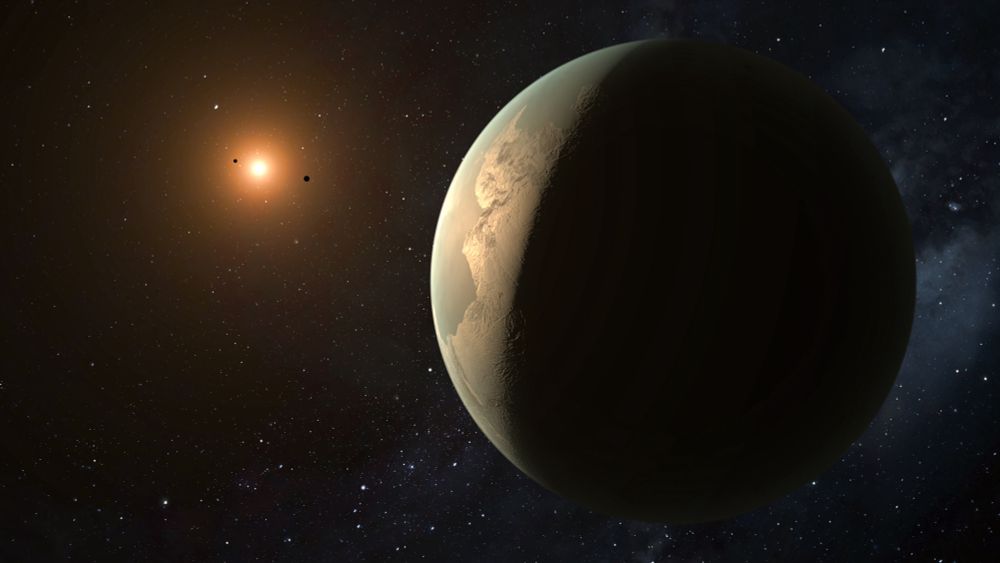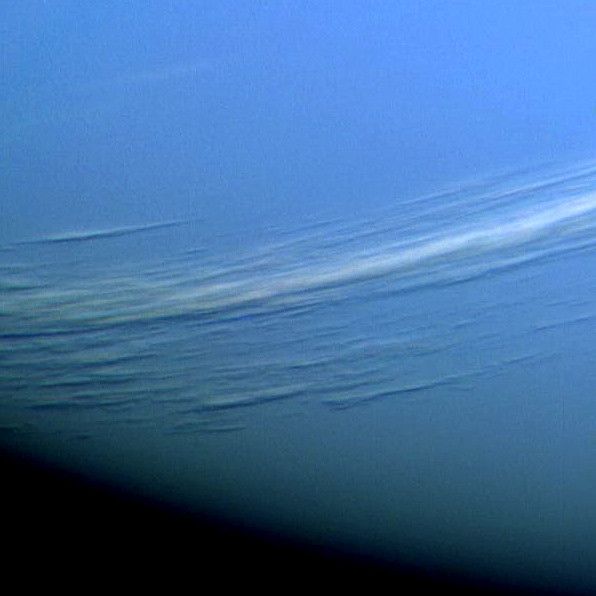
High-altitude clouds on Neptune.
Photographed by the Voyager 2 spacecraft on 25 August 1989.
11.08.2025 01:05 — 👍 227 🔁 28 💬 5 📌 2
I had a great time at #exoclimes last week, learning a lot, meeting new people, and catching up with old friends. Now, I'm off to the coast for hopefully a successful whale watching experience 🐳
15.07.2025 20:35 — 👍 3 🔁 0 💬 0 📌 0
New paper out! This is a review of the published JWST observations of rocky exoplanets so far: arxiv.org/abs/2507.00933
Quick summary of the key points:
02.07.2025 08:34 — 👍 63 🔁 16 💬 3 📌 3

An xkcd cartoon titled “Typical exoplanet system”. There’s a drawing of a star and several weird planets orbiting around it. The planets are labeled as follows:
Giant planet orbiting so close that it’s actually rolling on the star’s surface.
Hot Jupiter.
Mini Neptune.
Planet that could be habitable, if there’s a form of life that hates water but loves acid and being on fire.
Cold Jupiter.
Potentially habitable void.
Hot Mars.
Planet that may actually be in the habitable zone, according to a very optimistic modelling paper by some desperate postdocs.
There’s a pulsar here but it’s probably fine.
A water world paradise with beautiful oceans and warm- wait, no, we just got new measurements, it’s a hellish steam oven.
Mini Pluto.
Lukewarm Jupiter.
Earthlike data artifact.
Planet whose atmosphere is confirmed to contain atoms.
Wet Saturn.
Either a gas giant or a fist-sized rock, depending which calibration method you use.
Faint dust cloud that will cause several papers to be retracted.
Somehow this whole system is smaller than the orbit of Mercury?!
Planet whose surface may host conditions suitable for rocks.
Mouseover text: Sure, this exoplanet we discovered may seem hostile to life, but our calculations suggest it’s actually in the accretion disc’s habitable zone.
New exoplanet classification just dropped 🔭🧪
xkcd.com/3103/
17.06.2025 13:35 — 👍 182 🔁 56 💬 6 📌 8
![Comic. [yellow sphere with icon that reads, CHECK ENGINE] [caption] This new sunspot cluster has raised concern among astronomers.](https://cdn.bsky.app/img/feed_thumbnail/plain/did:plc:cz73r7iyiqn26upot4jtjdhk/bafkreifixtbs6xmvshoacqnxeqg2q5zpa5z4r36dcj2tz4wssavmfogmhe@jpeg)
Comic. [yellow sphere with icon that reads, CHECK ENGINE] [caption] This new sunspot cluster has raised concern among astronomers.
Check Engine
xkcd.com/3096/
02.06.2025 19:57 — 👍 5805 🔁 822 💬 67 📌 22
I will be volunteering at the PlanetS exhibition at Fantasy Basel, the swiss comic con. I'm very excited to see such an event from the other side ☺️
30.05.2025 05:31 — 👍 1 🔁 0 💬 0 📌 0
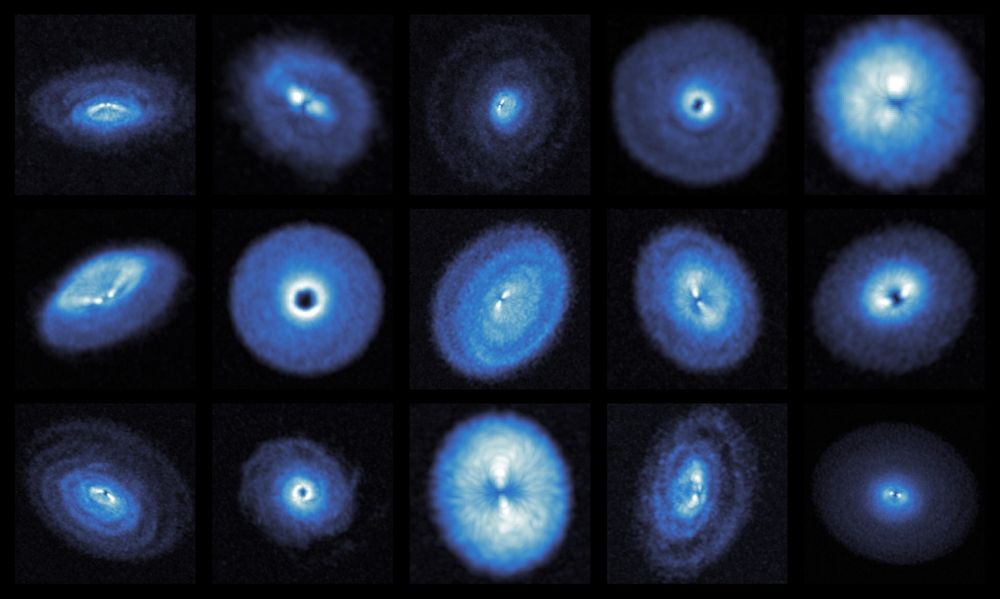
Deep ALMA observations of 12CO emission from fifteen protoplanetary disks reveal a stunning range of structures in the gas morphology including gaps, rings and spirals. Credit: Richard Teague and the exoALMA Collaboration
I recently visited the ALMA observatory in Chile. While I was poking around the telescopes, ALMA researchers released amazing new views of planet-forming disks around young stars.
These are the most detailed images yet of new solar systems being born. 🧪🔭
public.nrao.edu/news/exoalma/
22.05.2025 03:46 — 👍 616 🔁 164 💬 8 📌 10
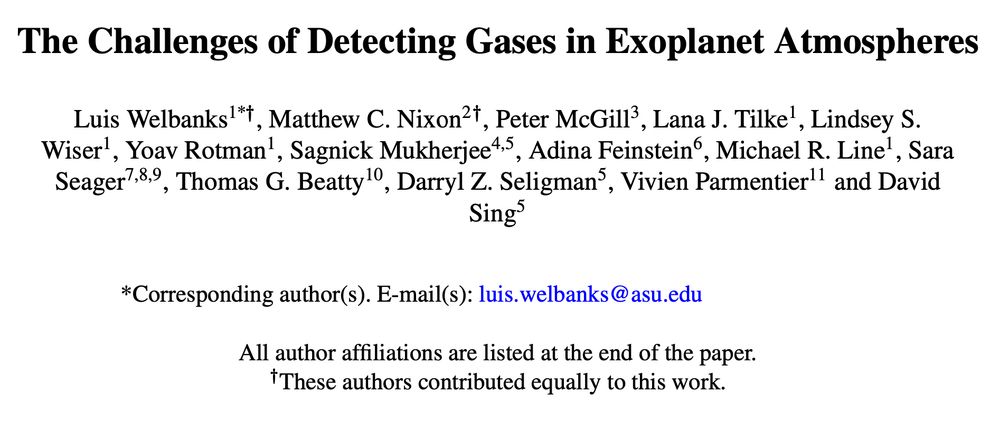
Just shared a new paper on the arXiv, led my @luiswel.bsky.social and me, on the challenges associated with detecting gases in exoplanet atmospheres. As the field pushes towards new and exciting opportunities, we thought it was time to talk about what it really means to “detect” something!
02.05.2025 01:29 — 👍 30 🔁 7 💬 1 📌 2
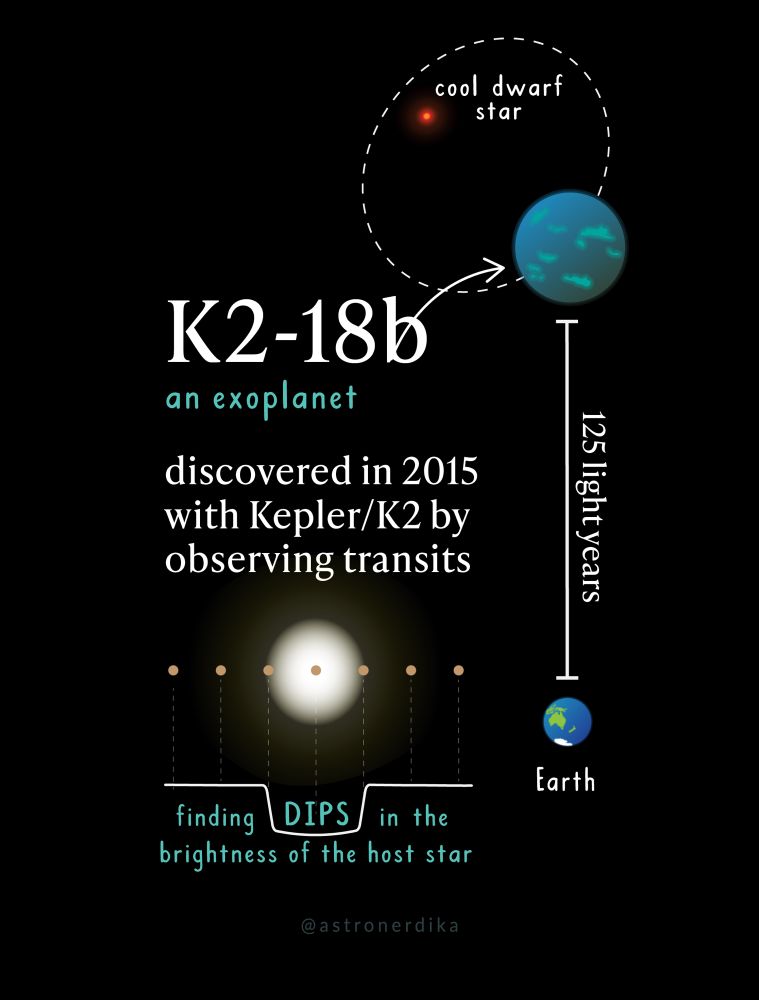
Infographic about the exoplanet K2-18b and its discovery with Kepler
So I know folks have heard the news about an exoplanet that might be “teeming with life”? 🌱
I created a series of infographics that aims to cover the key points of the research findings + some of the area where scientists are sceptical! 🧐
Meet K2-18b! 👋
#astronomy #exoplanet #scicomm
23.04.2025 01:43 — 👍 166 🔁 45 💬 15 📌 7
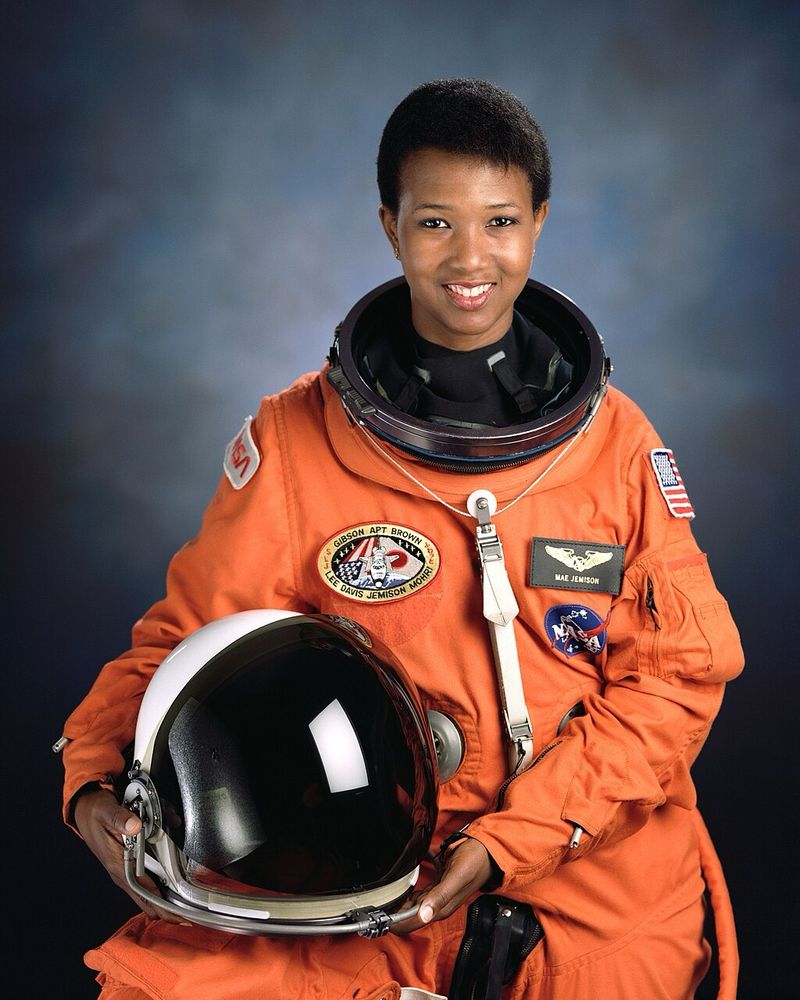
Mae Jemison wears a bright orange NASA space suit and holds her helmet for a photo
Since we’re all talking about it I want to blow up a real female space pioneer, Mae Jemison, an actual astronaut. She’s a graduate of Stanford and Cornel Medical School, served in the peace corps, started an educational nonprofit, and worked for the CDC researching vaccines. That’s a woman in space
14.04.2025 16:03 — 👍 4174 🔁 1270 💬 72 📌 62
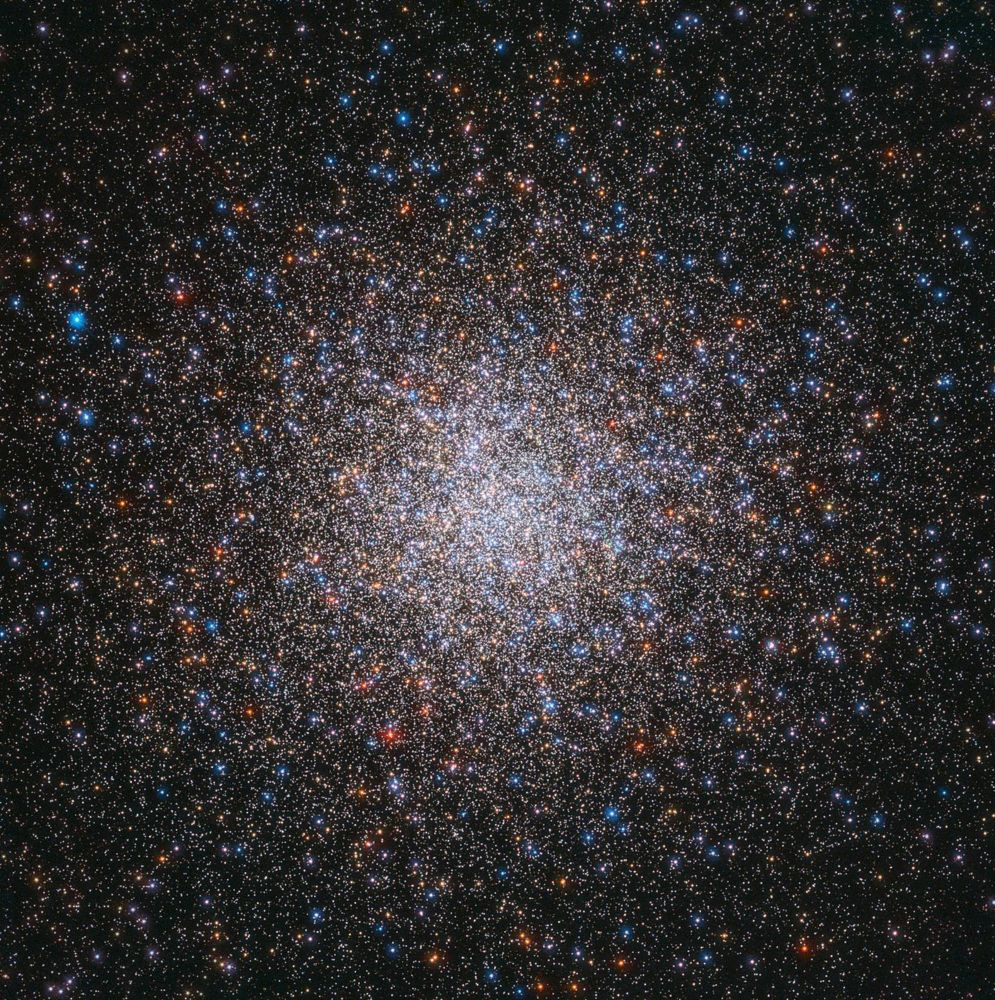
Messier 2 - Wikipedia
I've also given out some globular clusters!
✨ Your star cluster is: Messier 2 ✨
It's so big and easy to see that it was discovered already in 1746. It's really old (12.5 billion years) and has tidal tails emanating from it that may be perturbed by the LMC iopscience.iop.org/article/10.3....
14.04.2025 12:46 — 👍 1 🔁 1 💬 0 📌 0
Is it only open clusters or can we also get globular clusters?
14.04.2025 11:49 — 👍 1 🔁 0 💬 1 📌 0
Congratulations 🎉
04.04.2025 14:27 — 👍 1 🔁 0 💬 0 📌 0
Congratulations!! 🎉
04.04.2025 12:40 — 👍 1 🔁 0 💬 1 📌 0

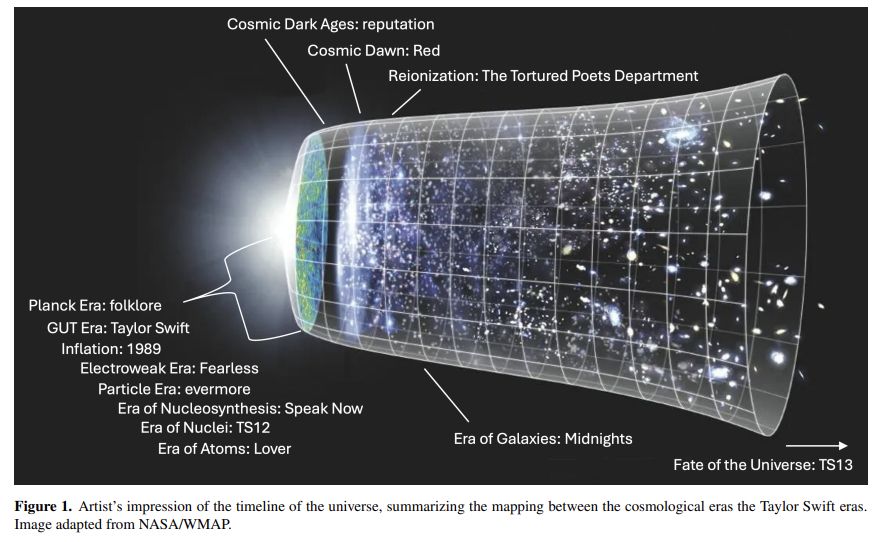
Ah yes, April Fool's day on arXiv. Enjoyed this one.
arxiv.org/abs/2503.22795
01.04.2025 07:33 — 👍 108 🔁 41 💬 3 📌 17
Dust to DNA 2024
Advertisement!:
PhD-summer school at the Globe Institute, UCPH 18-22 August.
From interstellar dust to habitable planets and the conditions for life.
Interdisciplinary lectures with perspectives from astronomy, cosmochemistry, geology, and astrobiology.
For more see: www.dust2dna.dk
31.03.2025 11:16 — 👍 1 🔁 3 💬 1 📌 0
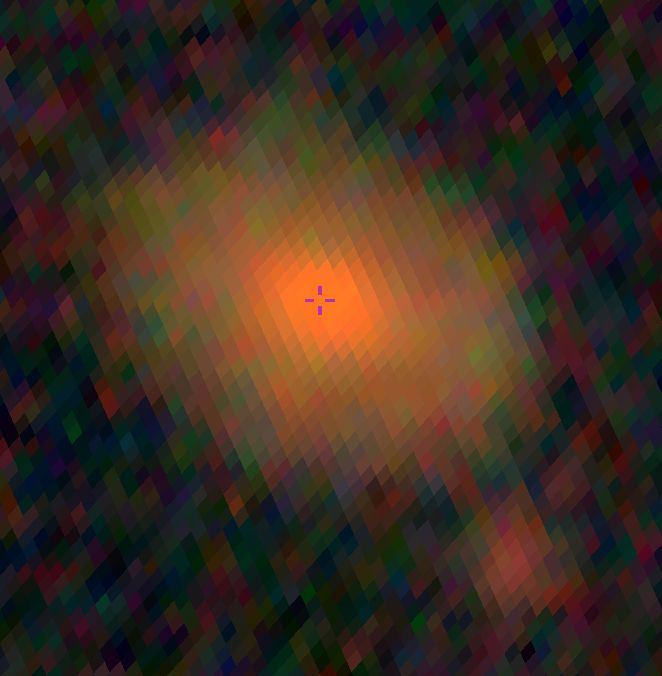
The DSS galaxy (a red blob)
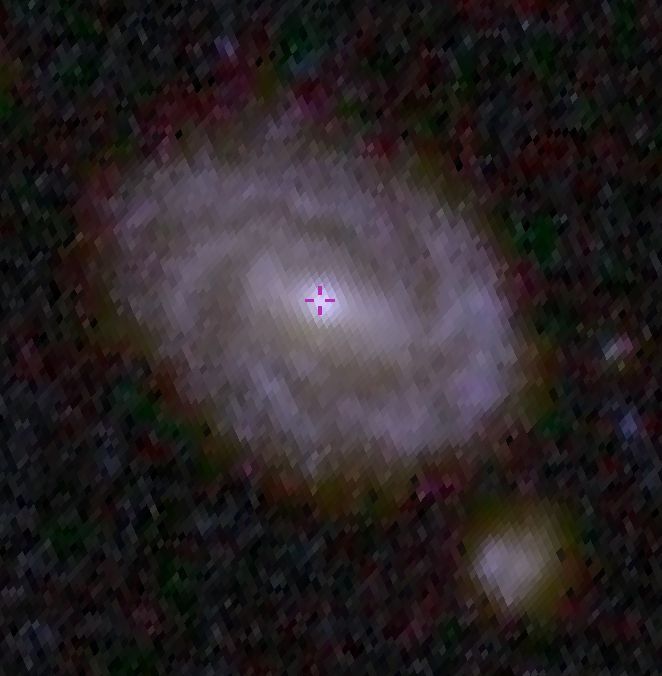
The Euclid galaxy (you can now see arms! detail! it's amazing)
The new EULICD data release is AMAZING! 🔭
Here's a before / after of a random galaxy I found in one of the new images, comparing against the Digitized Sky Survey.
I highly recommend taking a look around on ESA Sky - it's fun! Link: sky.esa.int/esasky/?targ...
19.03.2025 11:14 — 👍 1225 🔁 163 💬 32 📌 15
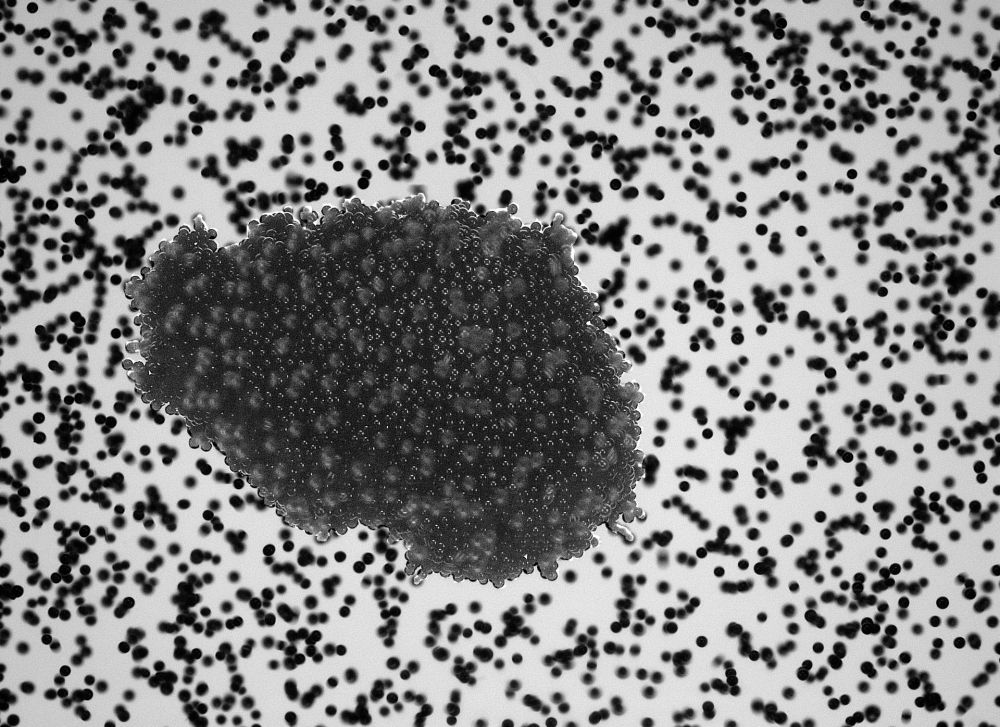
From pebbles to planets
From pebbles to planets
💫 We are all stardust. It takes millions of years for dust grains to form planets.
A six-minute ride into space revealed some secrets of planetary birth, showing how collisions trigger growth spurts in these baby planets.
🪨⏩🪐 From pebbles to planets: www.esa.int/ESA_Multimed...
18.03.2025 10:18 — 👍 27 🔁 6 💬 2 📌 3
Currently preparing a short presentation why I study the radius evolution of sub-Neptunes with different composition. This couldn't have come at better time.
18.03.2025 13:56 — 👍 4 🔁 0 💬 0 📌 0
🔭 The JWST Cycle 4 science program is out today! 🔭
Some truly exhilarating #exoplanet programs will be carried out by JWST starting in July 2025.
Let's take a look at some highlights. 🛰️🔭🪐
THREAD (1/9)
11.03.2025 22:08 — 👍 40 🔁 15 💬 1 📌 2
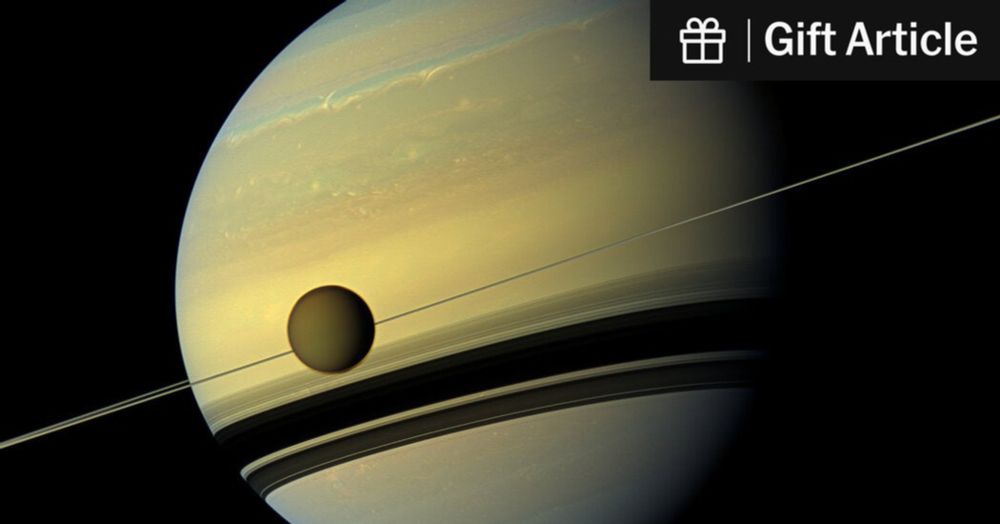
Saturn Gains 128 New Moons, Bringing Its Total to 274 (Gift Article)
The objects around the ringed planet are tiny, but some of them may have formed relatively recently in the solar system’s history.
Somewhat ridiculously, Saturn now has 128 new moons, bring its total to 274.
These are mostly tiny rocks, a few miles across, that orbit the planet backwards – but they might be evidence of a recent smashup in the planet's orbit.
Story by me in The New York Times
www.nytimes.com/2025/03/11/s...
11.03.2025 21:17 — 👍 138 🔁 35 💬 10 📌 13
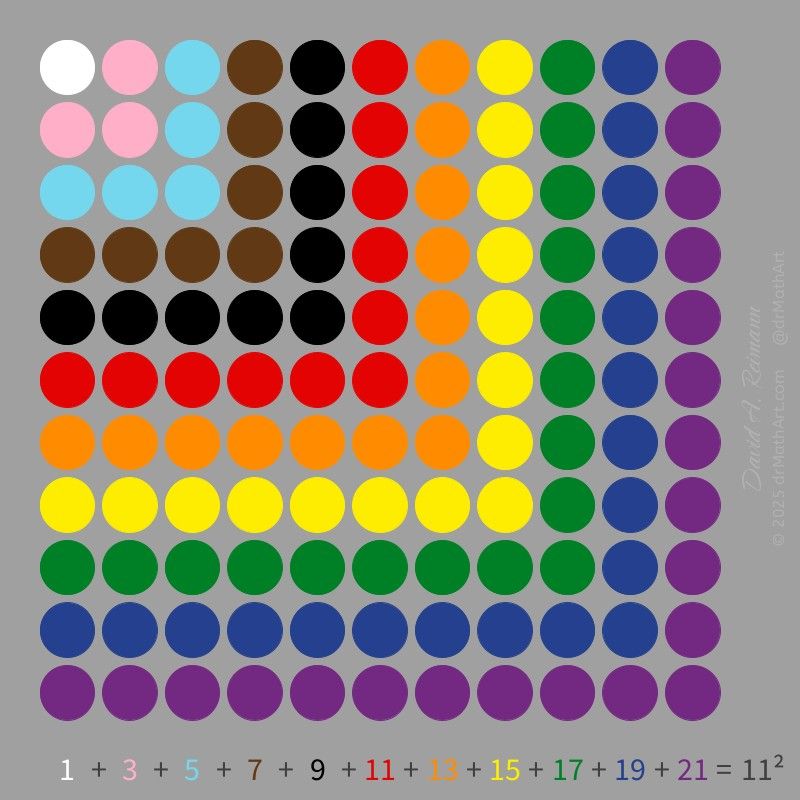
Colored dots arranged in L shapes having the numbers 1, 3, 5, ..., 11 arranged into an 11x11 square.
#MathArtMarch Day 11: Proof
A visual proof that the sum of the first n positive odd integers is n*n, attributed to Nicomachus of Gerasa (c. 100 CE) in Roger B. Nelson's book "Proof Without Words."
#MathArt
11.03.2025 05:11 — 👍 82 🔁 41 💬 4 📌 2
Almost every postdoc I know working on open clusters in Europe keeps getting shit career news, and I assume it's similar for other fields.
It's as if academia doesn't want to retain a single specialist in this stuff. What are people planning to do with Gaia DR4? Make a doorstop? Seriouslyyyy
11.03.2025 08:28 — 👍 55 🔁 5 💬 6 📌 0
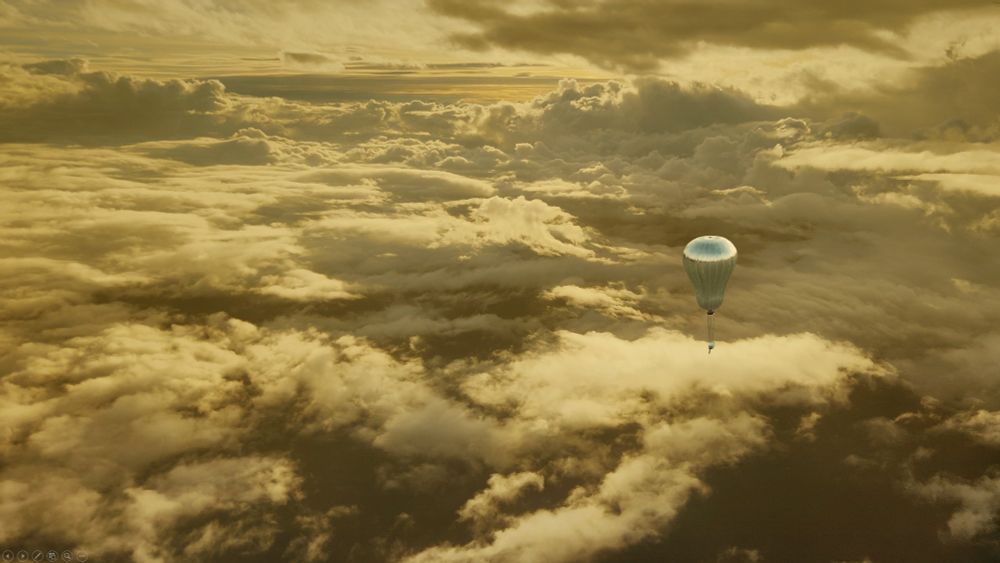
Balloons are to Venus as rovers are to Mars.
They allow us to explore the planet up close, without having to deal with the crushing pressures and searing temperatures at the surface.
We will yet fly through the skies of Venus.
We will yet fly.
26.02.2025 02:57 — 👍 106 🔁 10 💬 7 📌 0

The signing of the “Outer Space Treaty” in 1967, effectively the only international space law we have.
1) The “treaty” itself doesn’t really have any teeth.
2) It was signed in a different era, when space capabilities and aspirations were radically different.
Houston, we have a problem.
🔭🧪🚀
25.02.2025 14:12 — 👍 26 🔁 6 💬 1 📌 0
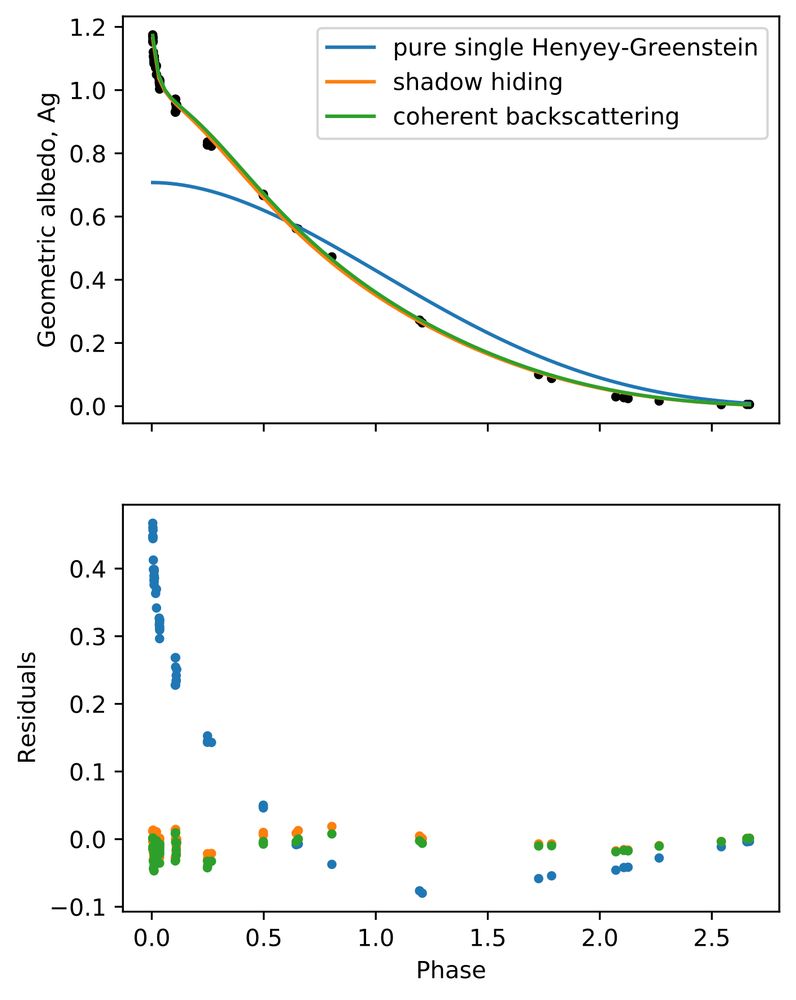
Figure 5: Best fit models to one of one of Enceladus’ phase curves (filter 798 nm) for three different models: a pure single Henyey-Greenstein
model with no additional opposition peak, shadow hiding model, and
coherent backscattering model. Top panel shows the fits and the second
panel shows the residuals of these best fits. It is clear that the model
with no opposition peak is the worst fit to the data. The other two models produce, by eye, almost identical fits, which is expected since the
functional forms are similar. However the residuals still show subtle
differences. Using the LOO model selection statistic allows us to conclude that the coherent backscattering model is preferred by 7/12 of the phase curves, however not significantly. The corner plot showing the
posteriors for the shadow hiding model are in Appendix A, Figure A.2.
*Newly Dr.* Kathryn Jones (+me and Kevin Heng) asks: "Planets show a sharp surge in brightness when directly opposite the Sun, and this peak is sharper for solid planets than for gas planets. Could we use this to detect rocky surfaces with JWST or HWO?" 🧪🔭🪐
tl;dr: no.
arxiv.org/abs/2502.14629
21.02.2025 15:22 — 👍 49 🔁 9 💬 3 📌 0
↘️ and here and animation of all multi-planet systems discovered in the Milky-way by #NASA #Kepler space telescope 2010-2013. All exoplanets shown together at same scale as our Solar system. 🔭🧪🎢 #space #earth #science credit: Ethan Kruse/NASA Goddard
14.02.2025 17:56 — 👍 31 🔁 14 💬 4 📌 6
Under new management
Submit entry by tagging @PlotAstro.bsky.social
Assistant research fellow @ASIAA (Taipei)
dynamics of all the little guys: M dwarfs + BDs + planets
Smith College + FCAD postdoc fellow + RECONS
🏳️⚧️ he/him since 2012 🏳️🌈 http://astro.gsu.edu/~vrijmoet/
Planeten formazioa ikertzen, PhD at Max Planck Institute for Solar System Research
Astrophysics PhD student at the university of Oxford studying exoplanet atmospheres
phd astrologer, world class barista, and professional chef
Associate Research Scientist studying planetary climates
Colombian 🇨🇴 PhD Student at University of Groningen. NL. Working on exoplanetary geophysics and magma ocean evolution🌋
Volcano-lover and photography enthusiast.
Atmospheric modeling and retrieval group
Max Planck Institute for Astronomy
Science communicator, video maker, author, podcast creator. PhD in theoretical atmospheric physics. Born at 354 ppm.
https://linktr.ee/simonoxfphys
Using the HARPS3 spectrograph for a 10-year radial velocity survey to discover Earth-like planets around solar-like stars. https://www.terrahunting.org/ #exoplanets #astronomy #instrumentation
Astronomy, Exoplanets, Astrobiology, Cool Worlds Lab, Columbia University. Be kind to one another.
The International Space Science Institute (ISSI) in Bern, Switzerland, is an institute of advanced studies where scientists from all over the world meet to discuss and publish about the most-pressing science topics.
Visit us on www.issibern.ch
Lecturer in Extrasolar Planets 🪐 🔭 at the University of St Andrews 🏴
This is the BlueSky feed of Raymond T. Pierrehumbert, Professor of Planetary Physics at the University of Oxford. Tune in for news about Principles of Planetary Climate, and diverse science and political commentary. (Also folk music news)
I am an independent postdoc who works on experiments with active matter and complex chemical systems to answer questions about life and especially the emergence of life
PhD student @ Instituto de Astrofísica de Canarias. I look for exoplanets, but I am generally fond of numerical modelling. I post in EN/ES/BG/RU.
The Ariel Consortium page | Ariel is an ESA mission to study what exoplanets are made of, how they formed, and how they evolve 🪐
Katie M Makes - Maker of crochet. Also qualified Tech Editor. Used to be a scientist. PhD in Chemistry/Abiogenesis. Currently working in Aseptic Pharmacy in the NHS.
Here for the science, pretty things and chat 😁
www.katiemmakes.co.uk



![Comic. [yellow sphere with icon that reads, CHECK ENGINE] [caption] This new sunspot cluster has raised concern among astronomers.](https://cdn.bsky.app/img/feed_thumbnail/plain/did:plc:cz73r7iyiqn26upot4jtjdhk/bafkreifixtbs6xmvshoacqnxeqg2q5zpa5z4r36dcj2tz4wssavmfogmhe@jpeg)













